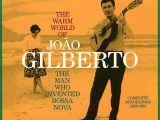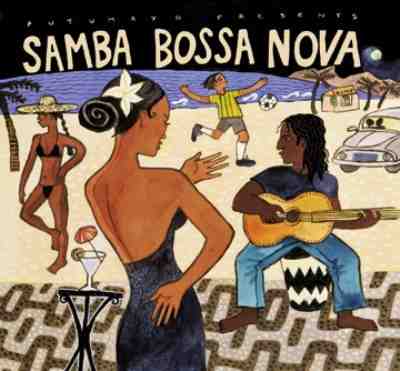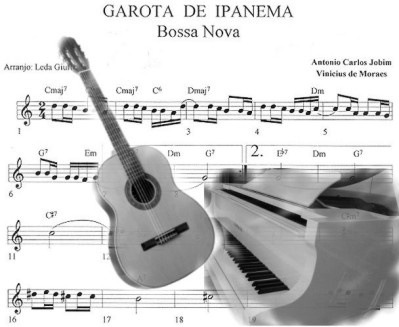Este post também está disponível em:
Português
English

João Gilberto do Prado Pereira de Oliveira (Juazeiro, June 10, 1931), better known as João Gilberto is a Brazilian musician, considered the creator of the bossa nova rhythm.
Biography of João Gilberto
João Gilberto was born in Bahia, in the backcountry town of Juazeiro, João got a guitar at the age of 14, and since then he has never let go of it. In the 1940s, he loved listening to everything from Duke Ellington and Tommy Dorsey to Dorival Caymmi and Dalva de Oliveira.
At the age of 18 João Gilberto decided to move to Salvador with the intention of becoming a radio singer and crooner. He then went to Rio de Janeiro in 1950 and had some success singing in the group Garotos da Lua.
However, he was thrown out of the band for indiscipline and spent some years in a marginal existence, although obsessed with the idea of creating a new way of expressing himself with the guitar.
His efforts were finally rewarded and, after meeting Tom Jobim – a pianist accustomed to classical music and also a composer, influenced by North American music of the time (mainly jazz) – and a group of middle-class university students, also musicians, they launched the movement that became known as bossa nova.
History of Bossa Nova
The rhythm of bossa nova is a blend of the syncopated percussion of samba in a simplified yet sophisticated form that can be played on a guitar (without additional accompaniment), the technique of which was invented by João Gilberto.

As for the vocal technique (an integral part of the concept of bossa nova), it is a technique of singing in an even tone of voice, with voice emitted without vibrato, and with a phrasing arranged in a unique and unconventional way (sometimes anticipating, sometimes following the rhythmic base), and in such a way as to eliminate almost all breath noise and other imperfections.
Despite his fame with the then-newly created bossa nova, his first commercially released recording was an appearance as guitarist on Elizeth Cardoso’s 1958 album Canção do Amor Demais, composed of songs by Tom Jobim and Vinícius de Moraes. Shortly after this recording, João Gilberto recorded his first LP, Chega de Saudade.
The title track, composed by Tom and which also appeared on Elizeth Cardoso’s album, was a hit in Brazil, launching João Gilberto’s career and, consequently, the whole bossa nova movement.
In addition to some compositions by Tom Jobim, the album featured older sambas and songs popular in the 1930s, but all played in bossa nova rhythm. This album was followed by two others, in 1960 and 1961, in which he presented new music by a new generation of singers and composers, such as Carlos Lyra and Roberto Menescal.
By 1962, bossa nova had been adopted by American jazz musicians such as Herbie Mann, Charlie Byrd and Stan Getz. At the invitation of Stan Getz, João Gilberto and Tom Jobim collaborated on what became one of the best jazz albums of all time, Getz/Gilberto.
With this album, Astrud Gilberto, João Gilberto’s wife at the time, became an international star, and Jobim’s composition Garota de Ipanema (in its English version, The Girl from Ipanema) became a worldwide hit, and a pop model for all ages.
João Gilberto continued to perform in the 1960s, but did not release any other works until 1968, when he recorded Ela é Carioca, during his time in Mexico.
João Gilberto’s album, sometimes called the “white album” of bossa nova (in allusion to the Beatles’ white album) was released in 1973, and features an almost mystical musical sensibility, his first noticeable change in style after a decade.
The year 1976 saw the release of the album The Best of Two Worlds, featuring Stan Getz and the singer Miúcha, who had become João Gilberto’s second wife in April 1965. Amoroso, from 1977, was arranged by Claus Ogerman, who sought a sound similar to that of Tom Jobim. The repertoire consisted of old sambas and some American musical standards from the 1940s.
In the 1980s in Brazil, João Gilberto collaborated with Gilberto Gil, Caetano Veloso and Maria Bethânia (creators, in the late 1960s, of the movement known as Tropicália). In 1991 he released the album João, which did not feature any compositions by Tom Jobim.
Instead, it had works by Caetano, Cole Porter and Spanish-language composers. João Voz E Violão, released in 2000, marked a return to bossa nova classics such as “Chega de Saudade” and “Desafinado”. The CD, a tribute to the music of his youth, was produced by Caetano Veloso.
Interspersed with these studio recordings were live recordings such as Live in Montreux, Prado Pereira de Oliveira or Live at Umbria Jazz.
Bossa Nova in recent years
One of João’s rare 2008 tours of Brazil was announced, tickets were disputed in homeric queues, for two performances at the Ibirapuera Auditorium in São Paulo they were all sold in about an hour, in Rio de Janeiro, for a performance at the Theatro Municipal, the same happened.
In the São Paulo concerts, the big surprises were the performance of songs not previously recorded by João, such as 13 de Ouro, Dor de Cotovelo, Hino Ao Sol / O Mar, Chove Lá Fora, Dobrado de Amor a São Paulo, and an unpublished song of his own, in honor of Japan.
Biography of the Bahian singer and composer João Gilberto




















